Alongside highly-collectible premium models that will set you back thousands of dollars, there are also countless other Seiko watches that are produced primarily for regular people (rather than watch enthusiasts), who simply need a good-looking and reliable timepiece to wear in their everyday lives. Ever since it first appeared during the 1970s, the Seiko Turtle has always been of the latter variety, intended to be the working man’s dive watch that is capable of offering professional-level performance at a budget-friendly price.
Although Seiko is first and foremost known for the diversity of its catalog, the brand has a rich history of producing dive watches that rivals some of the very biggest names in the industry. Seiko’s first diver (the ref. 6217 “62MAS”) arrived in 1965, and although it holds the auspicious distinction of being the brand’s very first dive watch, it features its winding crown at the usual 3 o’clock location and offers a much more traditional overall aesthetic compared to nearly all of its successors.
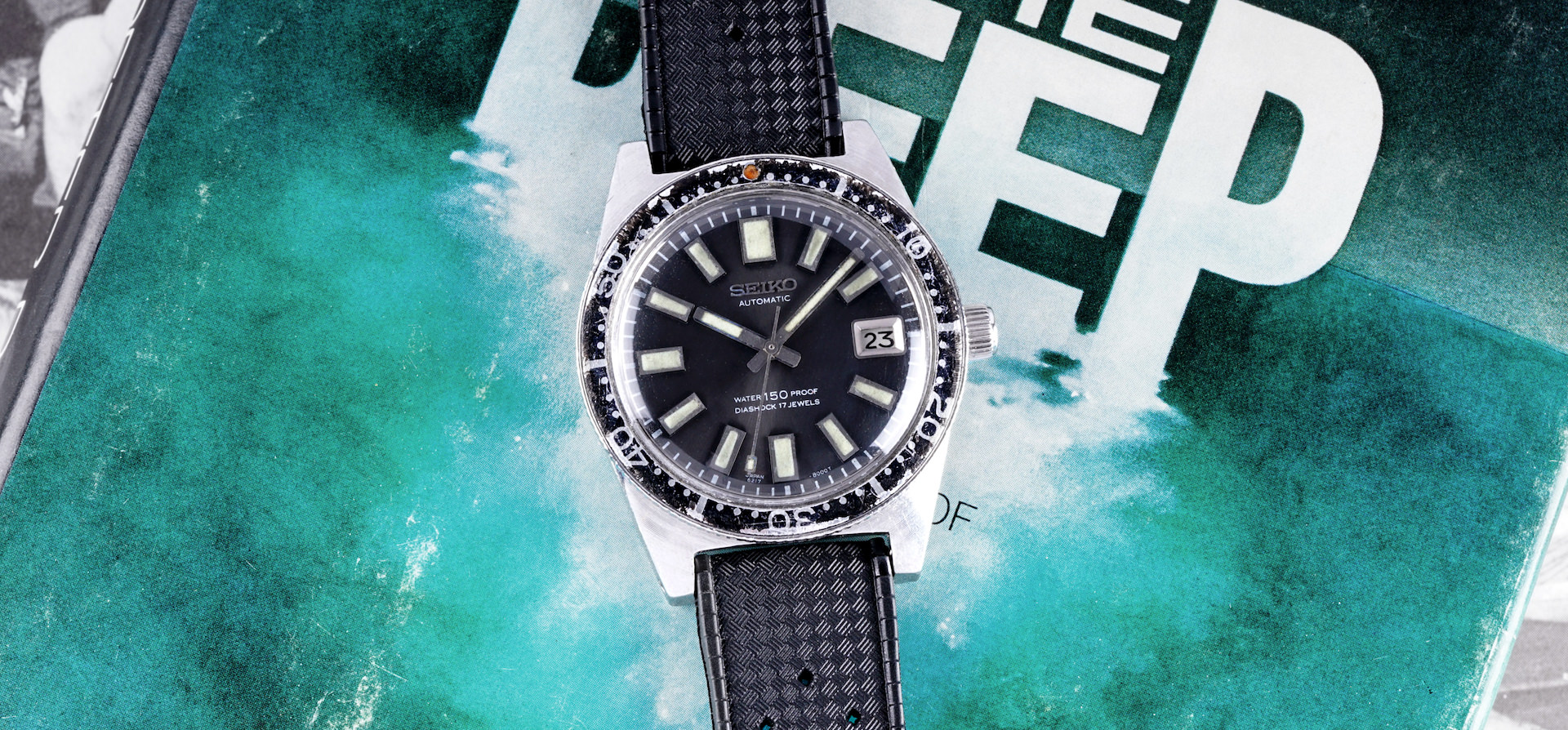
From this point, Seiko continued to push the boundaries of its dive watch technologies, producing highly purpose-built models that were largely aimed at a professional audience. However, the brand also continued to create dive watches intended for recreational scuba diving and for the average person who simply needed a tough and reliable timepiece that was also highly water-resistant.
Seiko’s follow-up diver aimed at the general population (the ref. 6105 “Captain Willard”) was released in 1968, and it introduced a cushion-shaped case that relocated the watch’s winding crown to the 4 o’clock location. A significant aesthetic departure from Seiko’s original model from 1965, this release established the design language for future Seiko dive watches and laid the groundwork for the Seiko Turtle, which would make its debut appearance the following decade.
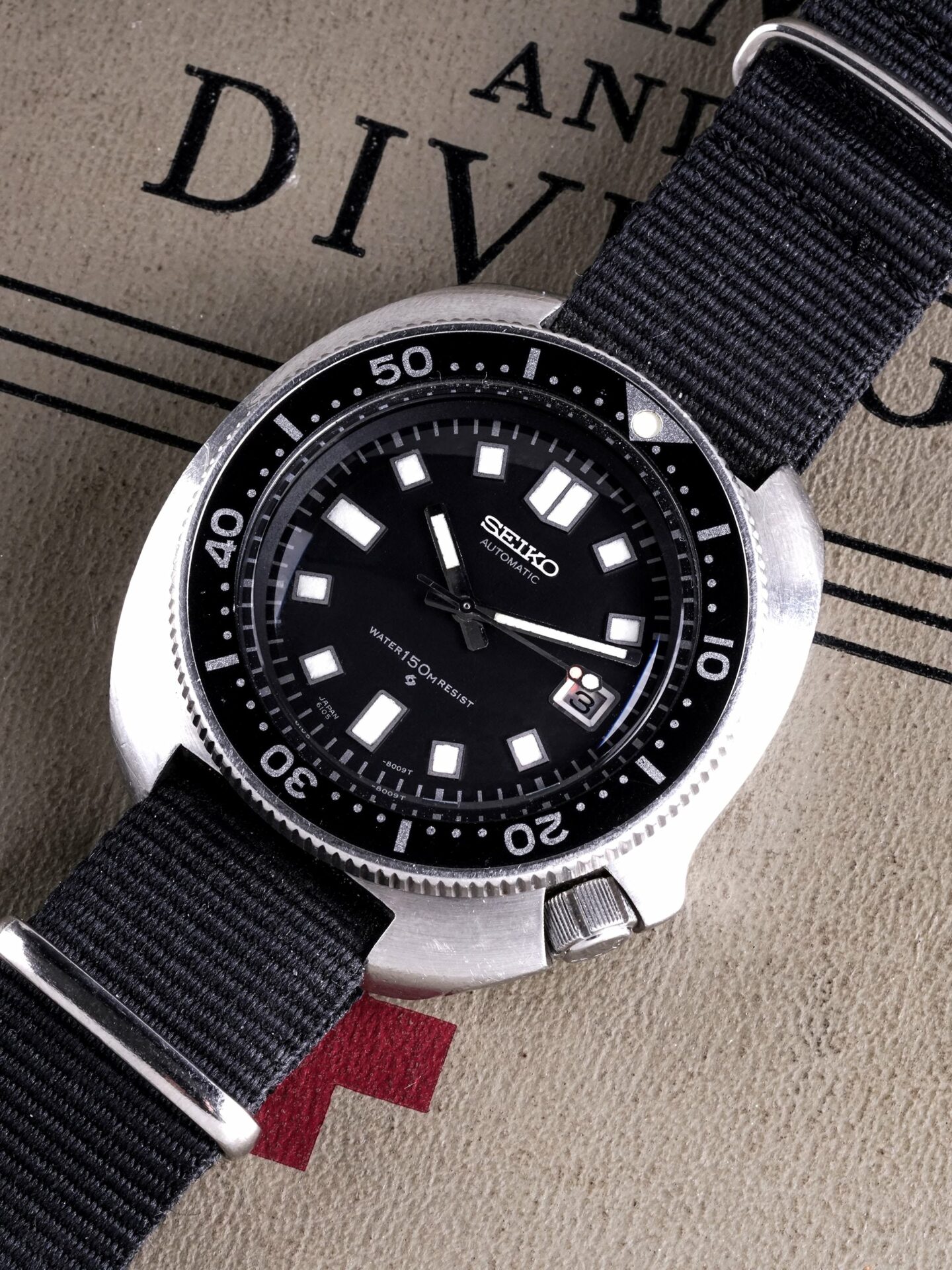
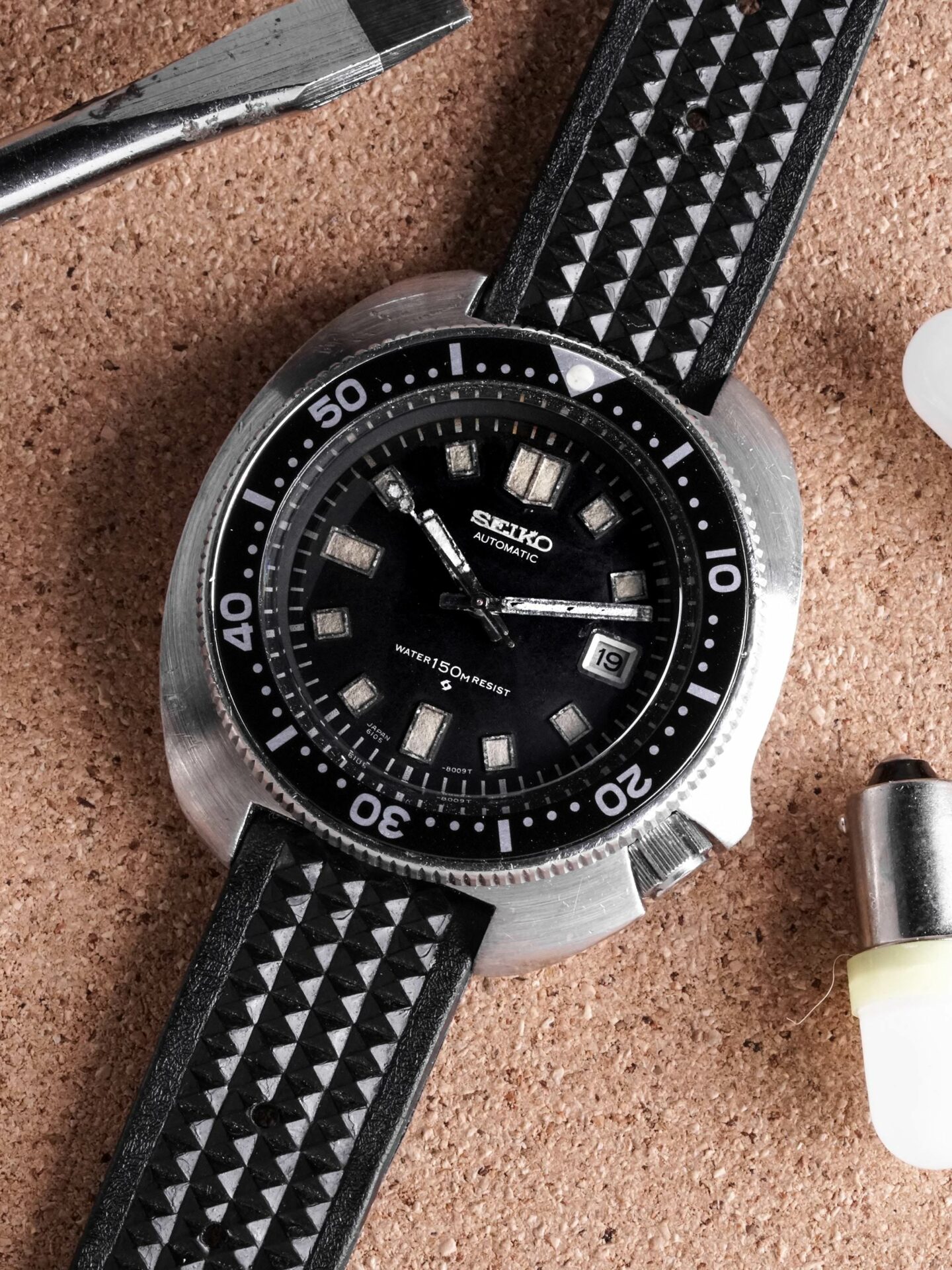
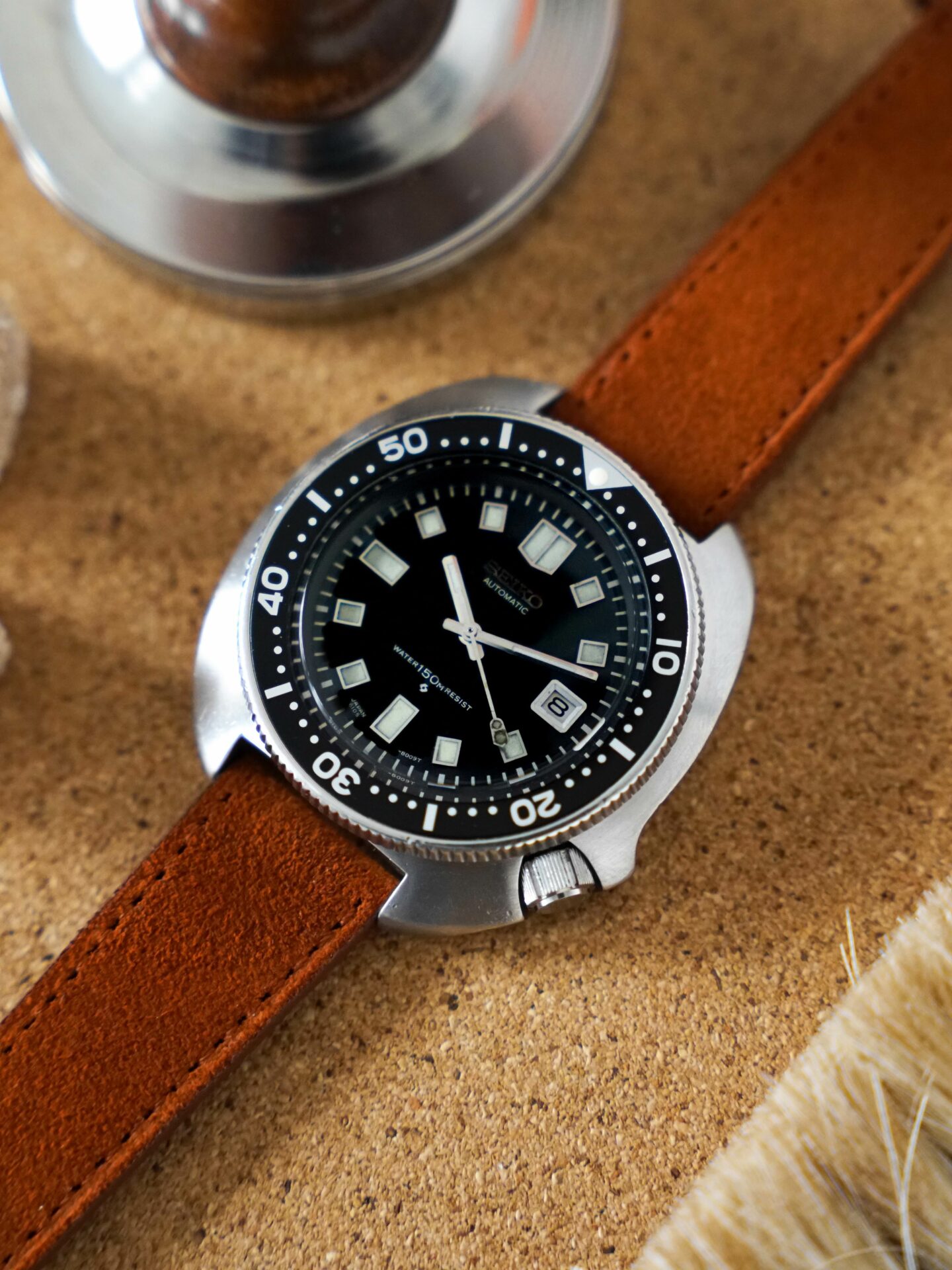
Designed by Ikuo Tokunaga, the very first Seiko Turtle was launched in 1976 and was originally produced only for the Japanese domestic market. Officially known as the reference 6306-7000/1, the new watch built upon the core design of the previous ref. 6105, with a cushion-shaped case and a 4 o’clock winding crown. However, unlike the ref. 6105 that features a highly asymmetric case that protrudes on either side of its crown, the case of the reference 6306 “Turtle” is significantly more rounded and symmetrical, with its large cushion shape still offering plenty of protection for its recessed winding crown.
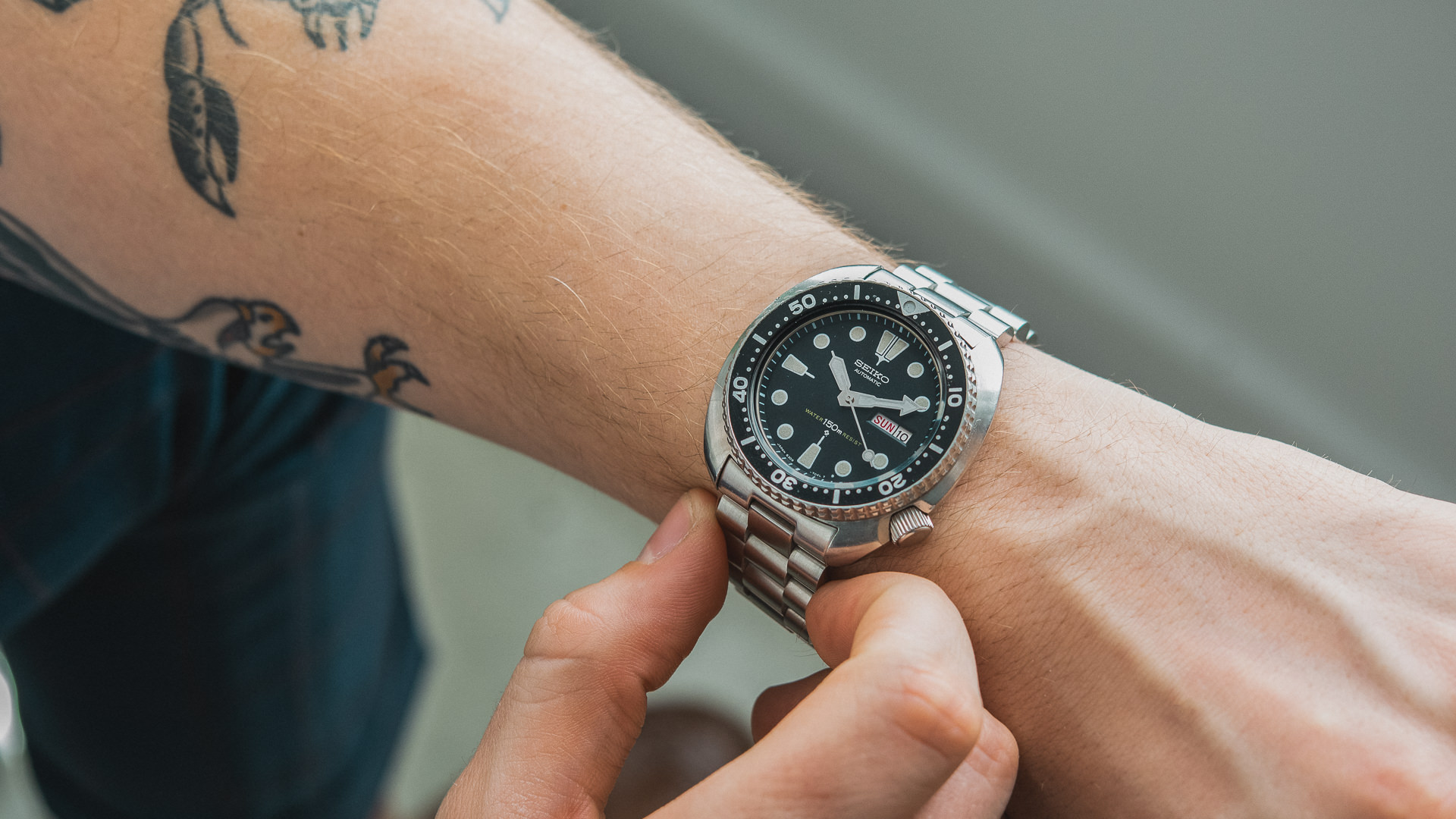
The now-ubiquitous “Turtle” nickname is due to the watch’s wide and rounded case, which somewhat resembles the silhouette of a turtle when viewed from above. Unlike the brand’s flagship professional divers of the era (such as the “Tuna”), which offered 600-meter depth ratings, the ref. 6306 “Turtle” was rated to 150 meters, giving it more than enough water-resistance for recreational scuba diving and any other type of aquatic activities that a person might encounter. Additionally, unlike its ref. 6105 predecessor that was fitted with an unusual style of locking crown, the winding crown found on the Seiko Turtle is of the more traditional screw-down variety, which offers improved reliability and long-term performance.
While the previous reference 6105 featured a date display at the 3 o’clock location, the updated movement inside the Seiko Turtle allowed it to also gain the added functionality of a day indicator. Furthermore, while the crystal fitted to the Turtle was still crafted from Seiko’s proprietary Hardlex mineral glass, it was now flat with beveled edges (rather than being domed like on the ref. 6105) to offer less distortion and a more modern overall aesthetic. Production of the ref. 6306 Turtle lasted until approximately 1981, when it was ultimately discontinued in favor of its near-identical sibling that was created for international markets.

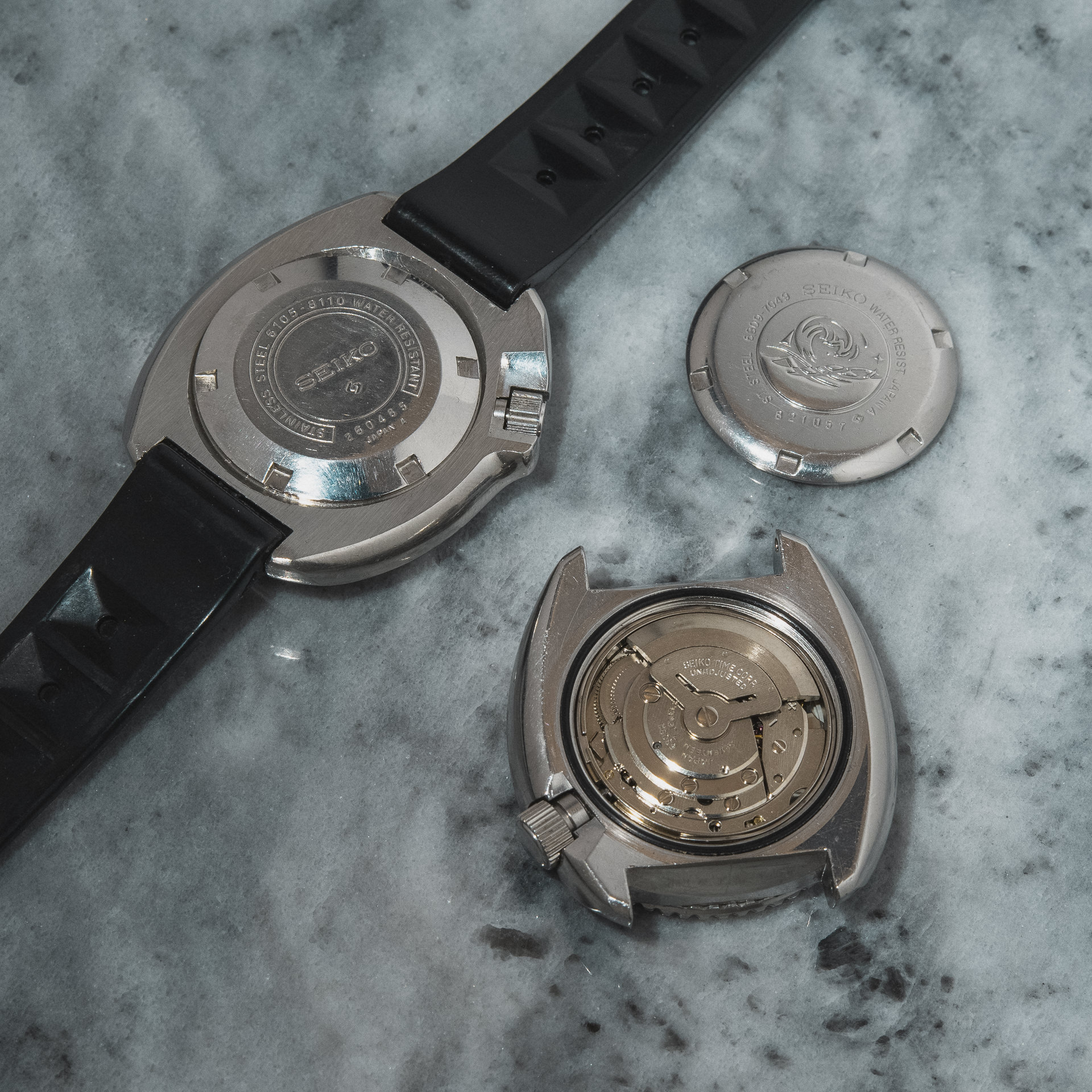

Although the very first Seiko Turtle ref. 6306-7000/1 was only intended for the Japanese market, the brand also created a version to be sold to the rest of the world that went into production later that same year in 1976. Officially labeled the reference 6309-7040/9 (but most commonly referred to simply as the ref. 6309), the version intended for global markets featured a slightly different movement and was produced in significantly larger numbers, resulting in it being the reference that first comes to mind when most people think of a vintage Seiko Turtle. In addition to having several fewer jewels, the 17-jewel cal. 6309A movement found inside the version of the Turtle destined for international markets also lacked the hacking seconds feature that is present on the 21-jewel cal. 6306A fitted to the JDM-exclusive version.
Beyond their different movements and the quantity of examples that were produced, the ref. 6306 and ref. 6309 Seiko Turtle watches are largely identical and the ref. 6309 occupied the role of the brand’s entry-level dive watch up until the point that it was discontinued in 1988. Furthermore, since the Seiko Turtle was not overtly designed for life below the surface of the ocean, it retains a certain amount of everyday versatility, and this quality made it highly popular among a wide variety of different adventurous professionals, including everyone from scuba divers and marine biologists to arctic explorers and military personnel.
While it was first and foremost designed to be a durable and function-forward dive watch, the distinct case shape of the Seiko Turtle also made it a favorite among many individuals who appreciated it for its design in addition to its diving capabilities. Legendary musicians such as Mick Jagger from the Rolling Stones, Brian May from Queen, and Don Felder from the Eagles all wore Seiko Turtle watches, and the model’s distinct case shape makes it easy to spot on their wrists in old photographs that exist today.
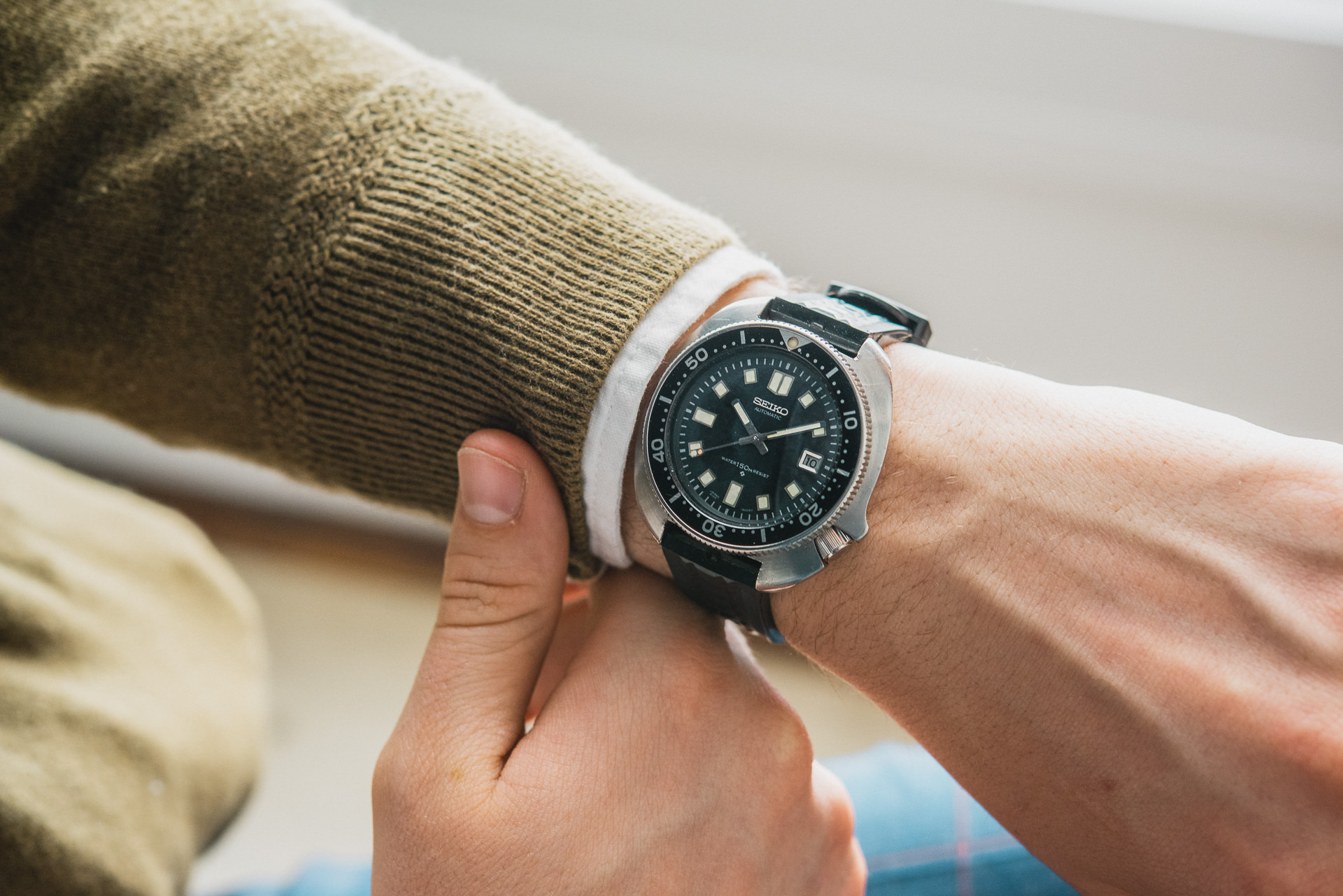
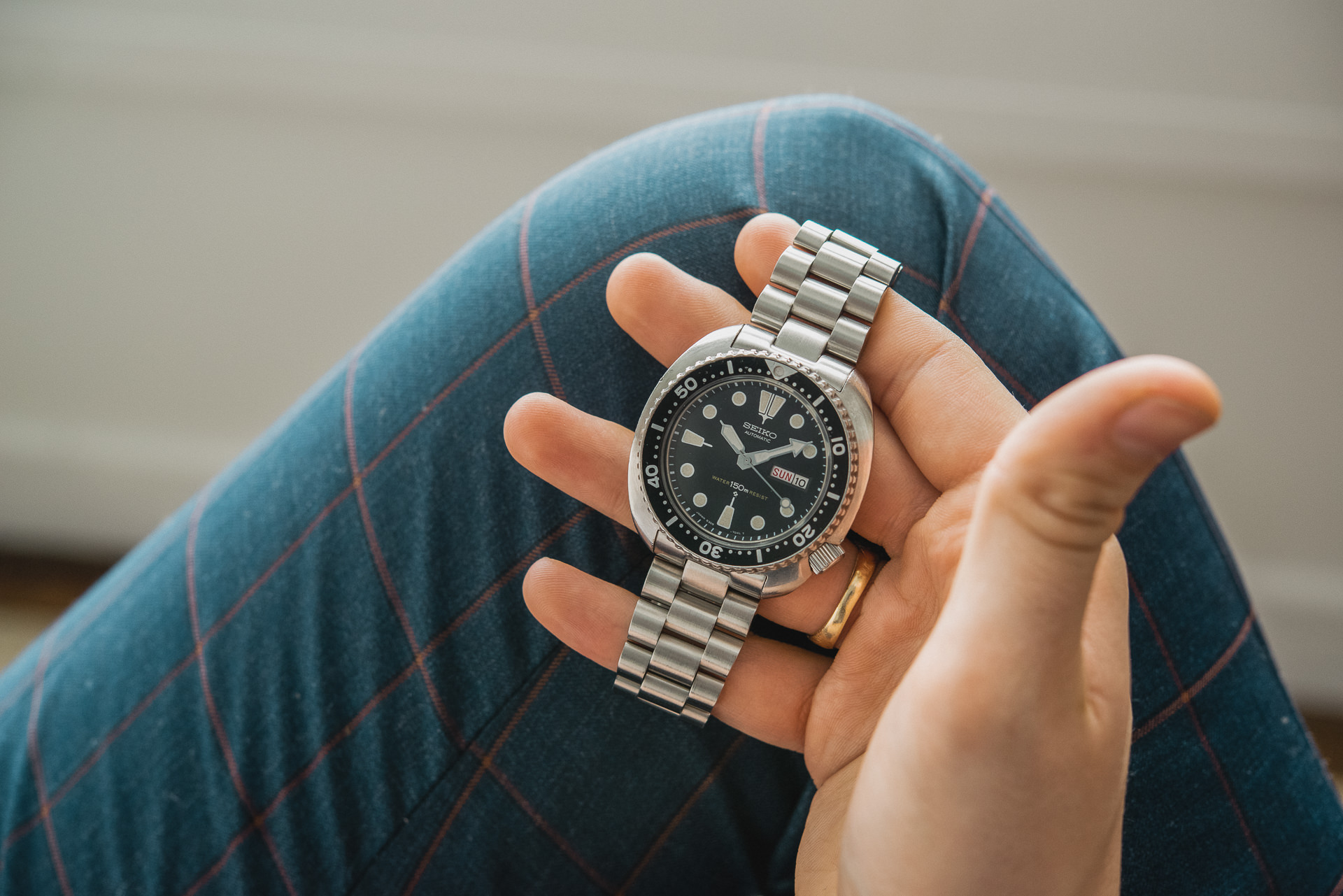
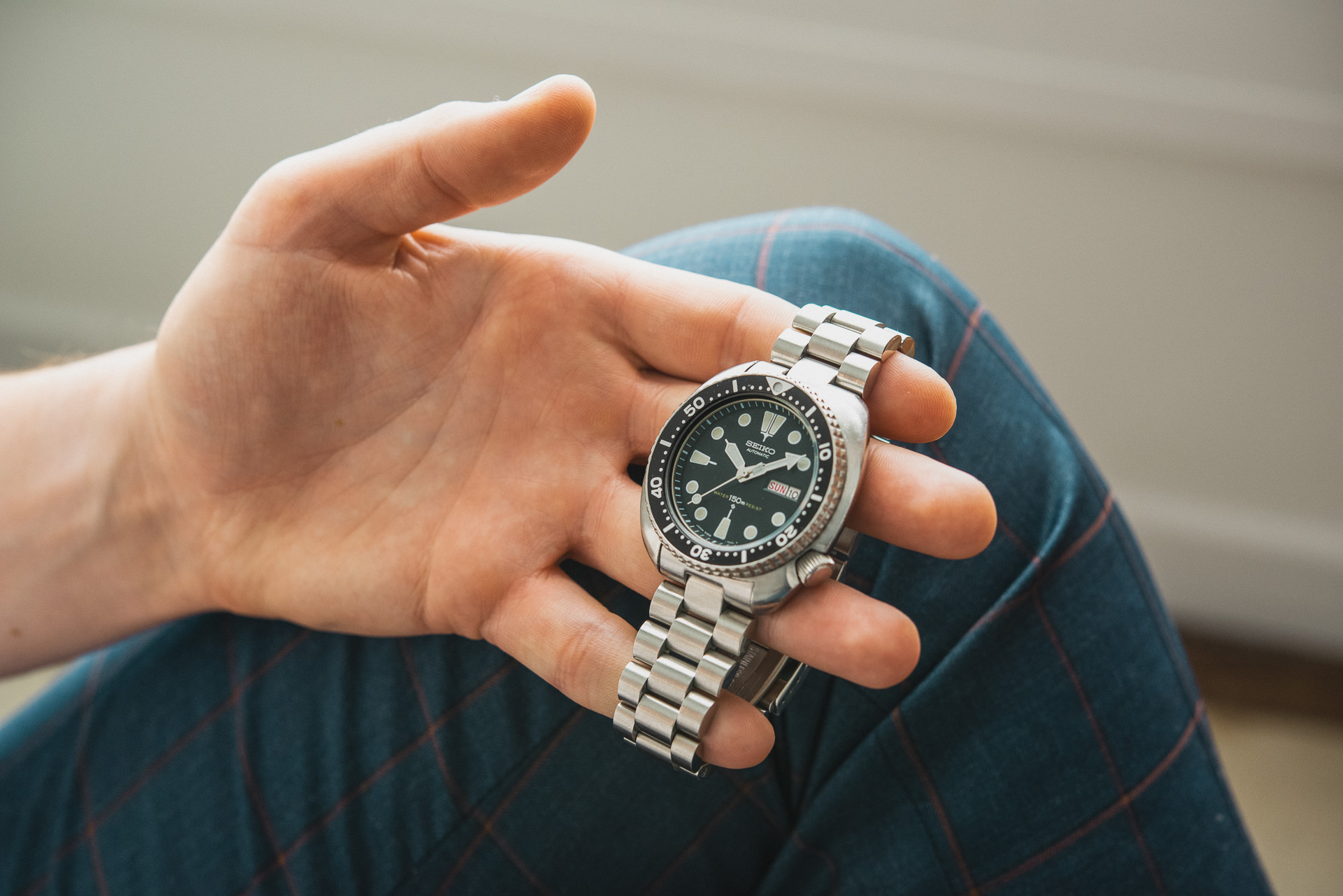
The cushion-shaped case of the Turtle was ultimately phased out at the end of the 1980s and replaced by a more streamlined design that will be recognizable to most people as the style featured on models such as the reference 7002 and the ubiquitous SKX007. However, as vintage watches started to gain popularity, Seiko revisited its past design catalog, releasing a new version of the Turtle in 2016 that would once again occupy the role of the brand’s affordable dive watch offering.
The new models are relatively faithful recreations of the vintage examples from the 1970s and 1980s, but they have slightly revised proportions, new movements, and updated dials with additional text and raised borders around their hour markers. Although the width of the case remains more-or-less the same, the modern Seiko Turtle is slightly taller lug-to-lug, which gives it a larger and more stretched-out appearance. Additionally, while the winding crown is placed exactly at the 4 o’clock location on the vintage ref. 6309, it is positioned slightly higher on the modern Turtle due to the architecture of Seiko’s contemporary range of movements. Although the modern equivalents lack some of the tool-like charm of their vintage counterparts, they continue the Seiko Turtle’s legacy as being an unpretentious professional dive watch that is accessible to nearly everyone.
The Turtle isn’t Seiko’s first dive watch, nor does it offer the brand’s single most groundbreaking or revolutionary design. However, it is still arguably one of the most important Seiko divers of all time, because it is one one the few that you are actually likely to see being worn out in the real world. While it may lack the prestige of some models or the mind-boggling specs of others, the Seiko Turtle enjoys an even more satisfying legacy as being the watch that can be spotted on countless different people’s wrists, from all different walks of life – both above and below the surface of of the ocean.

Check out 'Reference Tracks' our Spotify playlist. We’ll take you through what’s been spinning on the black circle at the C + T offices.

Never miss a watch. Get push notifications for new items and content as well as exclusive access to app only product launches.
Sign up for our newsletter to receive updates and exclusive offers